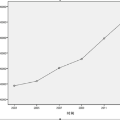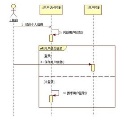With the latest advances in Deep Learning-based} generative models, it has not taken long to take advantage of their remarkable performance in the area of time series. Deep neural networks used to work with time series heavily depend on the size and consistency of the datasets used in training. These features are not usually abundant in the real world, where they are usually limited and often have constraints that must be guaranteed. Therefore, an effective way to increase the amount of data is by using Data Augmentation techniques, either by adding noise or permutations and by generating new synthetic data. This work systematically reviews the current state-of-the-art in the area to provide an overview of all available algorithms and proposes a taxonomy of the most relevant research. The efficiency of the different variants will be evaluated as a central part of the process, as well as the different metrics to evaluate the performance and the main problems concerning each model will be analysed. The ultimate aim of this study is to provide a summary of the evolution and performance of areas that produce better results to guide future researchers in this field.
翻译:通过深度学习的生成模型的最新进展,在时间序列领域中受益于它们的显著表现没有花费太长时间。用于处理时间序列的深度神经网络非常依赖于用於训练的数据集的大小和一致性,而这些特征通常并不丰富,实际上在现实世界中是有限的。因此,增加数据量的有效方法是使用数据增强技术,无论是通过添加噪音或置换还是生成新的合成数据。本文系统性地审视了领域中的现有技术,提供了所有可用算法的概述,并提出了最相关研究的分类法。将评估不同变量的效率作为该过程的核心部分,以及分析各种评估性能的度量标准和每个模型的主要问题。本研究的最终目的是提供领域内产生更好结果的发展和表现的摘要,以指导未来研究者在本领域的研究。




